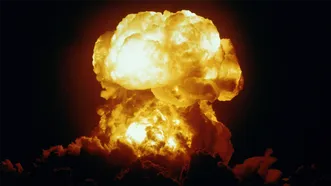
In light of recent discussions about enhancing the United States' missile defense capabilities, experts highlight the necessity for a system more advanced than Israel's Iron Dome to effectively counter long-range threats from near-peer adversaries.
Rocket scientist Ari Sacher, involved in the development of the Iron Dome, points out that the U.S. faces different security challenges compared to Israel. While the Iron Dome is designed to intercept short-range rockets from neighboring regions, the U.S. must defend against intercontinental ballistic missiles launched from distant nations such as North Korea, China, and Russia.
Sacher suggests that an effective U.S. missile defense system would likely involve space-based interceptors capable of neutralizing threats during their trajectory in outer space. This approach would provide a broader and more robust shield against a variety of missile types, including ballistic, hypersonic, and advanced cruise missiles.
The complexity of such a system extends beyond the interceptors themselves. Developing a comprehensive command and control infrastructure is crucial to manage the detection, tracking, and interception processes seamlessly. This involves integrating advanced radar systems, satellite networks, and real-time data processing to ensure timely and accurate responses to potential threats.
Implementing this next-generation missile defense shield aligns with strategic objectives to enhance national security and maintain a position of strength on the global stage. However, the undertaking presents significant technical and logistical challenges, necessitating substantial investment in research, development, and deployment of cutting-edge defense technologies.
As geopolitical tensions persist, the discourse on modernizing the U.S. missile defense infrastructure remains a critical aspect of national defense policy, aiming to protect the homeland against evolving and sophisticated aerial threats.




